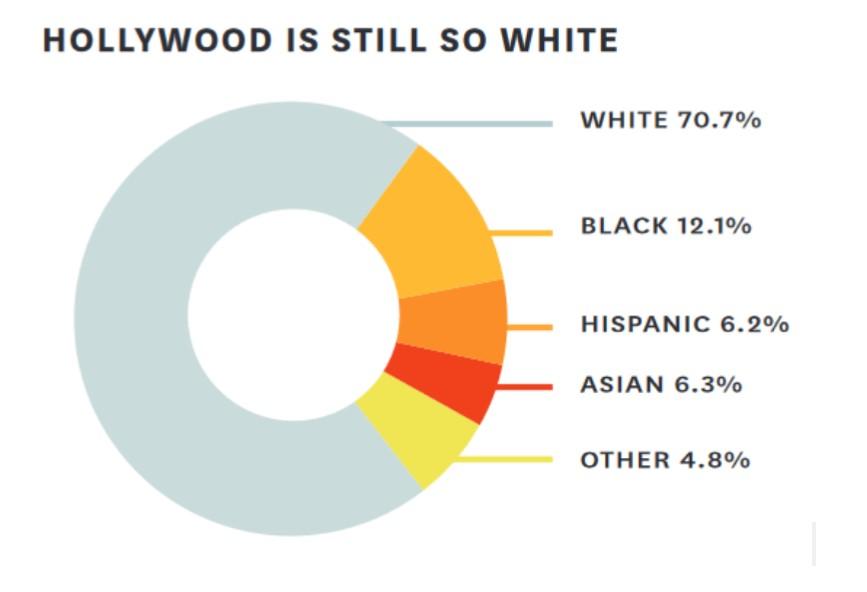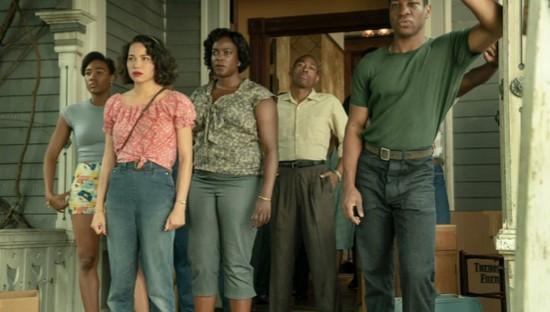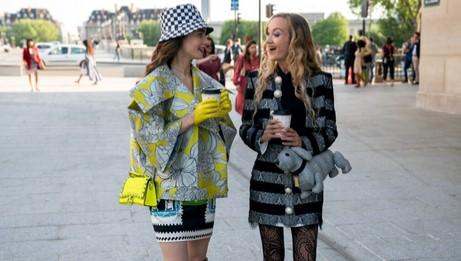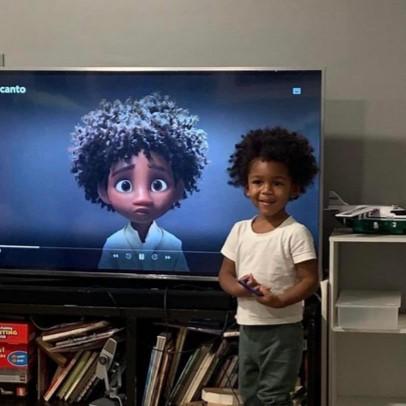
Diversity and representation in TV and movies and why it matters
The world is extremely diverse which is why representation is so important. There are people of different colors, different cultures, and different backgrounds everywhere. Yet when we take a look at some of the highest-grossing movies of the last decade, or the most popular television series on streaming services such as Netflix, we can not always find this diversity translated back on the screen. This lack of representation has consequences on our society and the people that can not find themselves back on the screen. In an interview with PBS, a high school junior said, “I do think it’s powerful for people of a minority race to be represented in pop culture to really show a message that everybody has a place in this world” (Elbada, 2019). This essay aims to analyze the representation of minority groups in popular media and the effects this has on our multicultural society.
Representation and diversity in numbers
The Annenberg Foundation, a philanthropic foundation dedicated to funding charities and building communities, released a study examining the portrayal of, among other things, race and ethnicities in over a thousand films released between the years 2007 and 2017 (see Figure 1). They found that in the top 1100 most popular films, only 30% of the speaking characters are non-white actors. Of those 1100 films, 20 did not have any Black or African American speaking characters, 37 films had no Asian speaking characters, and 43 films had no Latino speaking characters. These statistics include both men and women.

Figure 1: Percentage of different ethnicities in Hollywood movies.
Taking a look at the numbers for women of color in the most popular movies produces even more staggering results. In the top 100 films of 2017, 42% did not include any black women. Asian or Latina women appeared even less, with respectively 65% and 64% of the films showing no women of that background. The Annenberg Foundation study also compared these numbers to the percentage of the Latino population in the United States. Whereas Latino speaking characters only reach 6% of all speaking characters in the top 1100 movies, they make up almost a fifth of the American population (The Annenberg Foundation, 2018).
The effect of Representation
We live in diverse societies, yet Hollywood does not represent our reality accurately. Not only is this unfair, but as Sara Boboltz and Kimberly Yam state in an article for HuffPost, “It’s unfair that just over a quarter of speaking roles went to people of color in 2015’s top movies ― that Asians and Latino nabbed tiny slivers. It’s unfair that women made up less than one-third of protagonists in top movies in 2016. It’s unfair that black, Asian, and Latinx actors were completely left out of acting categories in the Academy Awards last year, and the year before that.” (Boboltz & Yam, 2017). It is also a vital issue to address in terms of consequences. The media people consume, the movies they watch, and the television series they follow, are not just entertainment, it also has an impact on the way people think and view other people. Television and movies have the ability to normalize events and phenomena that they show on the screen, and this can both have negative and positive results.
Representation has an impact on the way people think and view other people
Darnell Hunt, the director of the Ralph J. Bunche Center for African American Studies at UCLA, said, “We’re pretty confident that, the more TV you watch, the more media you consume, the more likely it is that media ― almost like radiation ― builds up. And the accumulated effect is to make you feel that what you’re seeing is somewhat normal.” This notion is supported by Ana-Christina Ramón, the assistant director of the Bunche Center, “What you see often becomes a part of your memory, and thus a part of your life experience.” (Boboltz & Yam, 2017). This means that films and television can influence the views of the watcher on certain people or different cultures. In addition to this, people of color or characters with different backgrounds can also shape how underrepresented people view themselves.
Symbolic Annihilation
As The Annenberg Foundation established, many people of color will not see themselves in the majority of the popular films; this can lead to symbolic annihilation. As Cole Bowman explains, “the term “symbolic annihilation” refers to the erasure of people—specifically categories of people like women, people of color, people with disabilities, and members of the LGBTQ+ community—from popular media” (Bowman, 2021). The representation of people belonging to minority groups, or the lack thereof, is not only a narrative issue. It is an issue that is social, political, and psychological. As Coleman and Yochim explain in their article on the subject, “symbolic annihilation points to the ways in which poor media treatment can contribute to social disempowerment and in which symbolic absence in the media can erase groups and individuals from public consciousness” (Coleman & Yochim, 2008). Simply put, symbolic annihilation occurs when a lack of representation of a specific group begins to affect their experiences in real life (Bowman, 2021). The term symbolic annihilation was first coined by George Gerbner in 1976 to describe the absence of representation of certain groups in the media. He states, “Representation in the fictional world signifies social existence; absence means symbolic annihilation" (Gerbner, 1976).

Figure 2: Lovecraft Country, HBO, 2020.
Multiple studies are showing the psychological effects of poor or non-existent representation. For example, a study by The Opportunity Agenda concludes that the way black boys and men are represented often adds to negative stereotypes such as aggression. Furthermore, the study argues that these stereotypes, the negative ways in which Black males are perceived, are especially harmful when the black males are dependent on others’ perception of them, for example, a judge in the court of law. Research shows that this can lead to “less attention from doctors, harsher sentencing by judges, lower likelihood of being hired or admitted to school, lower odds of getting loans, and a higher likelihood of being shot by police” (The Opportunity Agenda, 2011).
In 2019, Vice Media interviewed eight black women on how they are portrayed in popular culture. With black women being underrepresented, and considering the black women we do see in movies and on television are often shown in a negative light, Essence, a magazine and lifestyle organization conducted a study on the representation of black women, finding that the majority of images encountered regularly on television, social media, music videos, etc. are overwhelmingly negative. They will often fall into stereotypical categories such as gold diggers, baby mamas, or angry black women (Walton, 2020). To the question, “What is still problematic about the way Black women are represented and/or portrayed in pop culture,” visual artist Armina Mussa responded, “Where white women are said to be standing up for themselves, Black women are seen as wanting a fight. We are still unseen, and society has successfully exploited the cultural psyche of Black women. I hate how much pain everyone feels we are still capable of enduring. We are a glimmer of light, spirited and gentle, too.” (Vice Media, 2019). Mussa’s response notes the social and psychological impacts on-screen representations have.
Emily In Paris: a case study
A very recent occurrence of harmful representations having a direct real-life impact is the second season of the Netflix series Emily In Paris. The series follows the titular Emily as she moves from the United States to Paris, France, for a job at an elite fashion magazine. The series focuses, among other things, on the cultural clashes Emily experiences in the European country.
Soon after the first season of Emily In Paris, a controversy followed. The video essayist known as Friendly Space Ninja on YouTube analyses the issues in the series, specifically the casual racism, xenophobia, and offensive representation that appears in the video “Emily In Paris: Romanticizing Ignorance.” This video is currently the most viewed video concerning Emily In Paris on the entire internet, even beating the official trailer for the show on Netflix’s YouTube channel.
In December 2021, Friendly Space Ninja made a follow-up on the Emily In Paris video, discussing the controversy surrounding the second season of the series. He argues that the xenophobia that was rampant in the first season, is still a big issue in the second season. In the second season, Emily begins to take French lessons, where she meets and befriends a Ukrainian woman named Petra. Petra’s character is highly one-dimensional; the audience only learns her name, that she is from Ukraine, and, most importantly, that she shoplifts. After the episode where Petra tricks Emily into shoplifting, she is never seen again.
This harmful stereotype of Eastern European women as criminals caused a significant backlash. Many Ukrainian celebrities have taken to social media to speak out against this negative portrayal of Ukrainian women. Ukrainian influencer Eugenia Havrylko wrote an open letter on Instagram to express her disappointment in the series. She says, “@emilyinparis I’m speaking here on behalf of all the Ukrainian women around the world. And I feel like this cannot be ignored. Being the most successful @netflix show in 2021, knowing your influence on millions of minds and hearts all over the world, there is still a place for such ignorance and intolerance? The way you treated the image of Ukrainians in your second season, 4th episode is such a low cost trick, absolute scandal and a shame. And I cannot believe this is still happening in 2021. Time, where we show respect to all the nations and genders. Time, when we fight all the stereotypes that are ruining peace and cross-cultural relationship. Time, when nobody is laughing at such miserable things. Despite of that, you expose Ukrainian woman as a person without any feeling of taste and dignity. Stupid, ignorant thief. Come on. are you even serious? Such a shame for such a scale and this is happening when there are so many talented Ukrainians, who are influencing worldwide market of technology, fashion, art, sustainability, science, sport, etc.? In case, you didn’t know. Just some of thousands absolutely cosmic Ukrainian women. Just In art and fashion as an example.” (Havrylko, 2021). Havrylko’s caption perfectly encapsulates the issue people, especially Ukrainian women, have with the series, how this negative portrayal of someone like them in a remarkably popular series can be harmful and insulting.

Figure 3: Emily and Petra in 'Emily in Paris'.
The public backlash did not end with a handful of Instagram posts. Instead, it became a conversation amongst large press institutions as well. The Ukrainian branch of Cosmopolitan and Vogue spoke out against this offensive representation. Even the Ukrainian Minister of Culture and Information, Oleksandr Tkachenko, condemned the show’s portrayal of Ukrainian women. He said, “We have a caricature image of a Ukrainian woman that is unacceptable. It is also insulting. Is that how Ukrainians are seen abroad?” (Abbott, 2022).
The importance of representation
In November 2021, the Disney movie Encanto was released. It was an instant hit with audiences. The movie follows a multi-generational Colombian family with magical powers (Smit, 2022). Soon after, a mother, Kaheisha Brand, posted a picture of her son standing in front of the TV playing Encanto. Her son, who bears a striking resemblance to the animated character of Bruno, stands proudly next to Bruno. Brand tagged the post with #RepresentationMatters. With the addition of a repost on Twitter, the photo received over one million likes and more than eight thousand retweets. The virality of this picture proves how important people find it to be able to see themselves in the media they consume and how touching it is to see a young boy experience that. In an interview, Brand said, "The image of him sitting and staring was actually the first picture I took. He seemed to be in awe. He would stare at the screen and turn around smiling. [...] I think there is empowerment in positive representation. It is important that he see images that reflect him. I’m grateful for the creativity behind this movie and the diversity amongst the Black and brown characters." (Valdivia, 2022).

Figure 4: Real-life example of why representation matters.
Michael Morgan, former professor emeritus at the University of Massachusetts, said, “Stories matter, stories affect how we live our lives, how we see other people, how we think about ourselves.” (Boboltz & Yam, 2017). Diversity in popular movies and television series matters because an accurate portrayal of society affects both the over-and under-represented groups of society. Whereas an inaccurate, often offensive portrayal is harmful to both entire communities and also individual people. Representation matters. Representation impacts people. Everyone deserves to have their story told.
References
Abbott, K. (2022, January 3). Ukraine’s culture minister blasts Emily in Paris over ‘unacceptable’ stereotype.
Coleman, R.R.M., & Yochim, E.C. (2008). Symbolic Annihilation. The International Encyclopedia of Communication.
Friendly Space Ninja. (2021, February 4). Emily In Paris: Romanticizing Ignorance [YouTube Video].
Gerbner, G., & Gross, L. (1976). Living with Television: The Violence Profile. Journal of Communication, 26(2), 172–199.
Havrylko, E. [eugeniahavrylko]. (2021, December 23). Emily In Paris [Instagram].
katchingupwithkenzo. (2021, December 31). #RepresentationMatters [Instagram].
Rawan Elbaba, Student Reporting Labs. (2019, November 14). Why on-screen representation matters, according to these teens.
Smit, F. (2022, January 19). Diversiteit gaat in Encanto verder dan alleen uiterlijkheden, vandáár die monsterhit.
The Annenberg Foundation. (2018, July). Inequality in 1,100 Popular Films: Examining Portrayals of Gender, Race/Ethnicity, LGBT & Disability from 2007 to 2017.
The Opportunity Agenda. (2011, October). Opportunity for Black Men and Boys: Public Opinion, Media Depictions, and Media Consumption. Tides Center.
Valdivia, P. (2022, January 10). This 2-Year-Old’s Reaction To Seeing Himself Represented In “Encanto” Is Why These Movies Matter.
Vice Media. (2019, February 4). 8 black women on how they’re portrayed in pop culture.
Walton, D. (2013, October 7). ESSENCE’s Images Study: Bonus Insights.